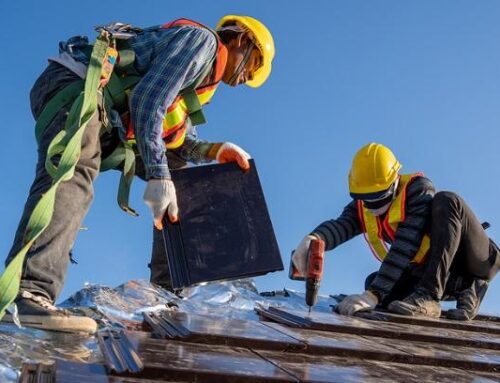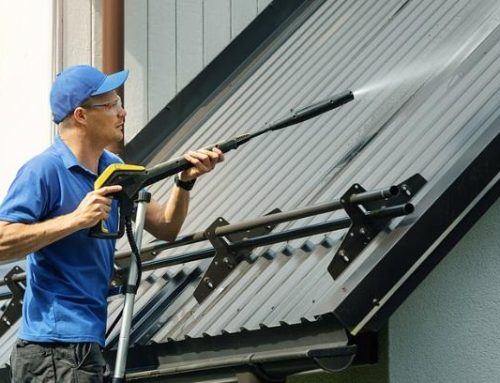
When installing a new roof or repairing storm damage, roofers must remove more than just the top shingles to get down to the underlayment. Underlayment is the protective layer between the decking and the exterior roof surface and is an essential component that must be repaired along with the outer layers.
This material is available as either felt paper or a synthetic barrier, with pros and cons to each. In either case, it is important that storm damage roofer services use some type of underlayment when making any repairs or installing a new roof to provide the highest level of water tightness.
Felt Paper Underlayment
Felt paper is the traditional underlayment that roofers have used for decades as the main leak barrier between wood decking and exterior shingles or metal panels. This material is made using felt paper, fiberglass, asphalt, and a number of other waterproofing compounds. This protective paper comes in rolls of a #15 weight. It also comes in a #30 weight, but many professionals argue whether the thicker, more expensive variety is any more useful than the #15.
The felt paper is rolled out over the decking and attached, giving the bare wood a watertight, yet breathable barrier under the shingles that does not prevent essential ventilation.
Synthetic Membrane Underlayment
In an effort to improve upon felt paper underlayments currently in use, synthetic varieties of underlayment have been developed over the last few years. This type of underlayment is produced by weaving polymer and polypropylene together into a stronger, lighter, and more watertight fabric that has a number of improved properties over felt paper.
Synthetic underlayment is also breathable to promote ventilation and can be more forgiving with perforations such as roofing nails and anything that creates a small hole. Some storm damage roofer services prefer synthetic underlayment due to this quality.
Which Underlayment Is Better?
Felt paper has been used successfully for a long time. It is the least expensive, most common underlayment option available and the one most used by general roofers. The main differences between felt and synthetic are the way they react to application with high-impact nail guns.
Felt paper tends to experience fine cracks and splits around the nail holes, while synthetic membrane barriers actually seal around the nail. Felt paper underlayment can last many years without any leaks provided the shingles or panels above it stay in good shape. It may eventually leak around nail holes as it ages if it is exposed to large amounts of water to the shingles.
Synthetic underlayment is much more durable and can protect the decking longer, thereby reducing the chance that leaking water will seep through the nail holes. From a performance standpoint, the synthetic underlayment can protect better over time, which is why many storm damage roofer services now prefer it; however, it can add extra cost to roofing installation.
Which underlayment should roofers use when working on a home? Owners should discuss the pros and cons of each type with a local storm damage roofer service in order to make the best choice. Synthetic costs more, yet may provide better protection if there is a considerable risk of leaks. Felt paper is more affordable and has been used reliably for decades. As more contractors become familiar with synthetic membrane underlayment, many are beginning to recommend this greater protection to their customers!




